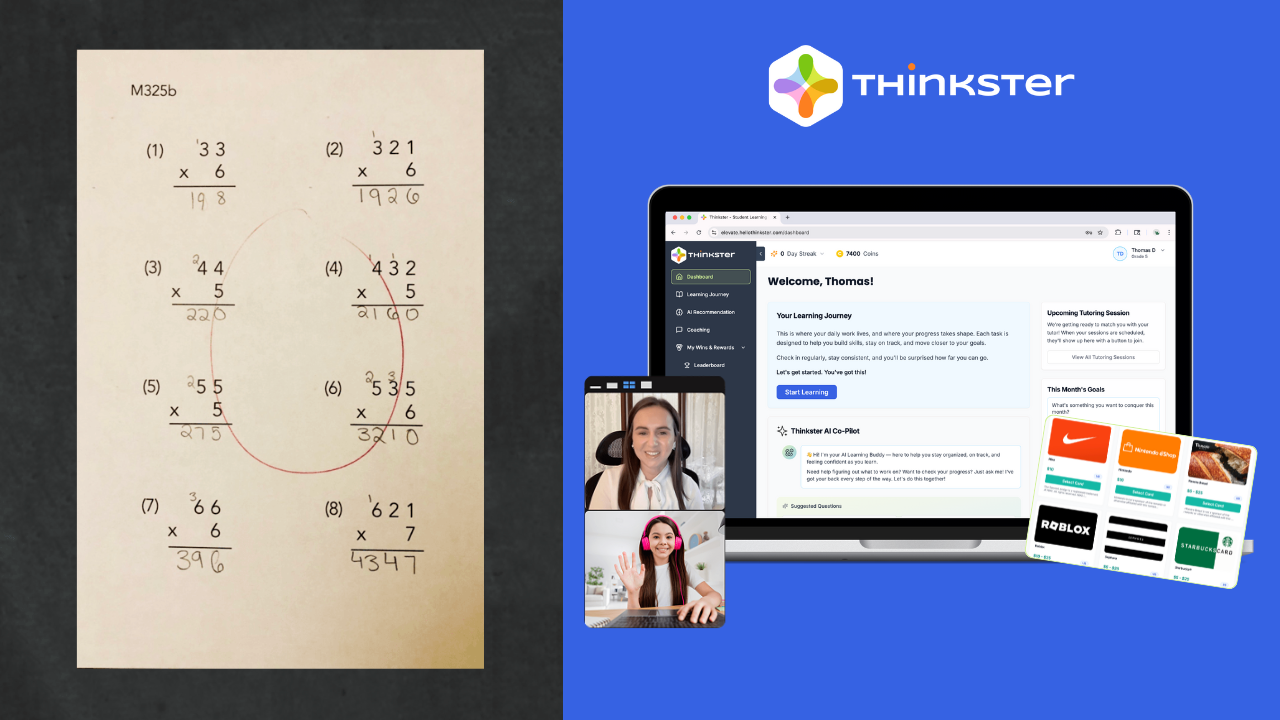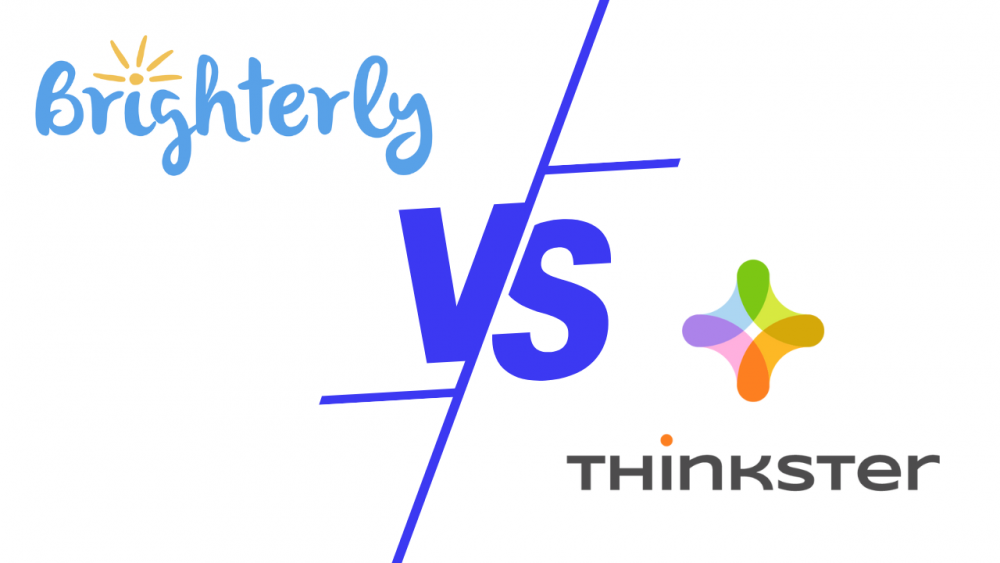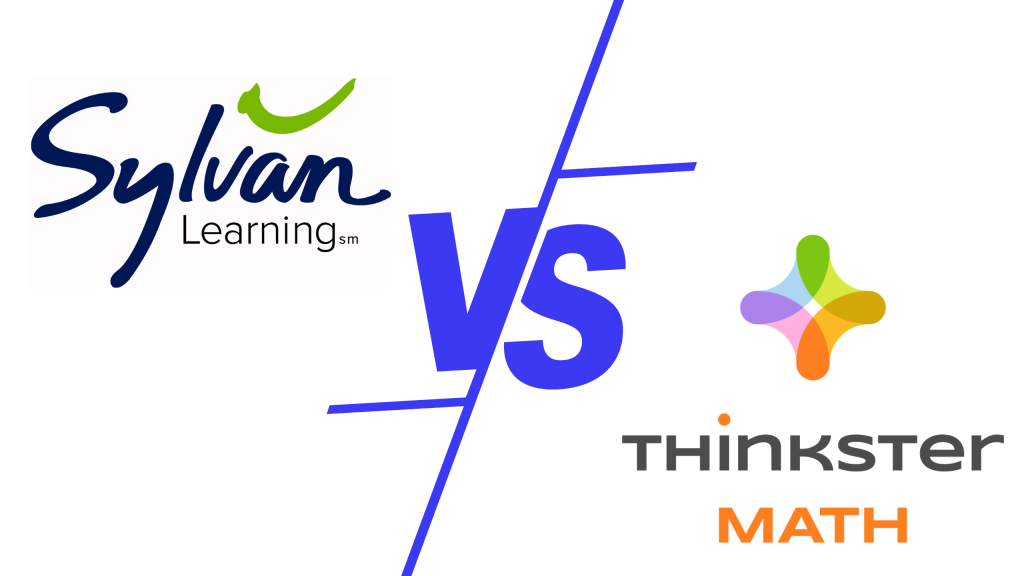

Last Updated on December 8, 2025
Not every child thrives under the same learning method, so we’ve compiled a detailed comparison guide highlighting the differences between the Kumon® and Thinkster programs.
This comprehensive guide compares the Kumon Math program and Thinkster, outlining their key differences across various metrics.
Get the insights you need to choose the best educational program for your child confidently.

Thinkster is perfect for families who want their children to build strong conceptual mathematics skills. We are looking to develop mathematicians rather than arithmeticians.
We do this by covering a broad curriculum with a strong emphasis on word and logic problems. Our programs assess students’ abilities to create a personalized learning plan that aligns with their educational goals, fostering a supportive and effective learning environment.
Students can either fill in gaps in their math knowledge or extend their math knowledge beyond grade level. Our combination of digital worksheets and one-on-one whiteboard tutoring sessions with trained math coaches provides a personalized learning approach for students of all levels.
Parents and students love Thinkster’s tutoring programs because they get one-on-one sessions with expert tutors who provide personalized guidance and support. These sessions help students build confidence, master challenging concepts, and improve their math skills more effectively. With expert coaching, students stay motivated and achieve better results in school.
The AI technology behind our digital worksheets helps tutors track student mistakes and deliver a study plan to improve and accelerate each student’s learning outcomes. Our expert math tutors then use the coaching sessions to support students’ Thinkster work, give homework help, or provide test prep.
Our world-class curriculum, aligned to CCSS, state standards, and Singapore Math, ensures students understand each math topic. Furthermore, we also make sure important math topics such as geometry, logical reasoning, and data and measurement are mastered.
Many parents choose Thinkster Math because the service takes a personalized approach to their children. Thinkster uses assessments and planning to address each child’s weaknesses and fill in these gaps with conceptual skills.
Thinkster believes that teaching students the conceptual skills surrounding mathematics will give them the foundation to adapt to different problems as they arise.
Thinkster Math offers flexible and affordable pricing plans designed to fit different learning needs and levels of tutor support. Our plans start at just $64/month, providing unlimited AI-driven digital worksheets, real-time feedback, progress tracking, and private 1:1 tutoring with a dedicated expert math tutor!
Unlike traditional learning centers, Thinkster provides a cost-effective alternative with the convenience of online learning—no commuting, no scheduling hassles, just expert support from the comfort of home.
Thinkster Math’s curriculum is designed to help students master fundamental concepts, develop strong problem-solving skills, and build confidence in their abilities. Our program covers a wide range of topics from basic arithmetic to advanced algebra and geometry, aligning with state and national academic standards, including Common Core and other global curricula.
Students work through AI-driven digital worksheets tailored to their skill level, ensuring they receive the right level of challenge and support. In addition to independent practice, students receive personalized one-on-one coaching sessions where expert tutors help reinforce concepts, assist with schoolwork, and prepare for tests.
With Thinkster, students gain a deep understanding of math rather than just memorizing formulas—setting them up for long-term academic success.

Kumon is a more traditional math program that accelerates students through the curriculum by focusing on rote learning, arithmetic, and standard algorithms. Kumon Math is a good option for families who want their children to concentrate on calculation skills and move quickly to algebra and beyond.
Students engage in Kumon math practice for approximately 30 minutes each day. They participate in classes at a Kumon Learning Center twice weekly and complete assignments independently at home on the remaining five days of the week. Kumon offers in-person study, tablet and virtual.
Kumon’s curriculum is designed to allow students to progress at their own pace. This individualized approach helps students develop skills based on their learning speed and ability. The Kumon method focuses on building a strong foundation in math and reading. This ensures students understand basic concepts well before moving on to more advanced topics.
Kumon emphasizes self-learning, encouraging students to solve problems independently. This helps to develop critical thinking skills and the ability to tackle new challenges without constant guidance.
The cost of Kumon can vary depending on the location and the specific program or services offered.
However, here is a general idea of what you can expect to pay:
When evaluating options for your child, it’s essential to be aware of the associated Kumon charges. Typically, parents can expect to pay an initial registration fee ranging from $80 to $100. Monthly tuition fees generally fall between $150 and $200 per subject, whether math or reading. Some Kumon centers may offer package deals that include multiple subjects or additional services, such as tutoring sessions or test prep, which can provide some cost savings.
It’s worth noting that the cost of Kumon can add up quickly, especially if you have multiple children enrolled in the program. Additionally, some Kumon learning centers may charge extra fees for materials, testing, or other services, so be sure to inquire about all potential costs upfront.
The Kumon Method covers a wide range of math concepts designed to build a strong foundation. Students work through basic operations such as addition, subtraction, multiplication, and division, then progress to fractions, decimals, percentages, algebra, and geometry. The program also introduces word problems and logic puzzles to support problem solving development.
Kumon structures its curriculum sequentially, with each level building on the previous one to reinforce mastery. Some educators and parents, however, feel that Kumon does not always go deep enough in areas like critical thinking or conceptual understanding. While the method is effective for strengthening fundamental skills, it may not fully support students who need broader problem solving approaches or more holistic understanding of math concepts.
Kumon can be a valuable tool for skill building, but it is important to weigh both its strengths and limitations. Understanding how the method works will help you decide whether it aligns with your child’s learning needs and goals.

Different families will have different priorities when supporting their children’s math learning, so let’s dig deeper and compare the features that Thinkster and Kumon offer!
At Kumon, an initial assessment is carried out to determine the student’s starting point.
Kumon sometimes charges an initial registration fee in addition to the monthly fee. They do run specials at certain times of the year, so you should check with your local learning center for more information! The monthly fee gives access to Kumon sheets and up to twice-weekly center visits.
A quick look into Kumon prices shows that parents typically spend an average of about $130 per subject per child. Kumon program costs may change from center to center as they are independently owned.
At the start of their Thinkster membership, students take one or more skills assessment tests to determine any gaps in their knowledge. Thinkster also offers private tutoring, providing personalized, one-on-one instruction that ensures individual attention for students.
Thinkster has no registration fee and offers a range of subscription plans, including unlimited digital worksheets with and without one-on-one tutor sessions. Families can easily switch between subscription plans and aren’t locked into a particular one.

Thinkster Math worksheets cover the whole math curriculum and include many logic and word problems. These help students thoroughly understand math topics and closely follow the types of questions used in schools and on standardized tests. They learn critical thinking skills to supplement their foundational skills, which allows them to adapt to new problems as they present themselves.
Thinkster uses digital math worksheets, which students can write on using a trackpad, a stylus, or their fingers on a tablet. Students can also access the app on a computer, laptop, or phone!
Thinkster provides video tutorials and a video library for students to watch examples before, during, or after completing a worksheet. Kumon math sheets provide a brief example problem at the start of each subtopic to help a child get started on the topic.
Kumon starts with counting, moves to arithmetic and fractions, and then on to algebra. By not focusing on non-core topics such as geometry, measurement and data, and limited logic and word problems, Kumon students can reach algebra at a relatively early stage.
As one former Kumon instructor turned Thinkster instructor told us, “What’s the point of knowing algebra when you won’t be doing it at school for another five years? With Thinkster, I can build a student’s foundational skills while addressing school topics.”
This generation of students responds well to digital resources. Kumon Math workbooks are mainly paper-based, allowing kids to write their problem-solving methods and solutions on the worksheets. They have also launched a “Kumon Connect” app at some participating centers. You can find a participating learning center on its website by looking for the “Tablet Study Available” image.

Thinkster’s AI driven system identifies and fills gaps in each student’s knowledge, including challenges with word problems, logic, or foundational skills. After strengthening these areas, the AI recommends the right mix of skills to move students to grade level and beyond while ensuring they continue to master earlier concepts.
Students take assessments at the end of each topic and each grade level. In some cases, Thinkster gives a test before a new topic begins to pinpoint what the student already knows, allowing the AI to focus their time on the trickier parts that need attention. Worksheets can also be assigned to support school homework or upcoming tests.
This approach ensures that every student receives a tailored learning plan that adjusts in real time. By pinpointing exactly where help is needed and adapting the path accordingly, Thinkster builds strong foundational understanding before advancing to new concepts. The tutor then steps in to guide, coach, and support the student based on the AI’s insights.
Kumon, on the other hand, assesses a student’s starting point and then moves them through the program in a linear sequence, with one skill at a time and level tests given at the end of each Kumon level.

Thinkster students can work on multiple topics at the same time. This helps them get used to the mixed-topic approach of standardized tests and avoid feeling bored or overwhelmed by a single topic. Worksheets are automatically graded, and teacher solutions and feedback are available.
This learning experience is powered by Thinkster’s patented AI technology, which analyzes each student’s work in real time and personalizes the learning path automatically. The AI identifies strengths, gaps, learning patterns, and pacing needs, then recommends the exact skills and worksheets that will help a student grow faster and stay confident. This level of precision is impossible to achieve through manual planning and ensures every child receives a truly individualized plan that adapts daily.
Expert tutors review AI recommendations and provide targeted guidance where it matters most. They support students with explanations, encouragement, and accountability, and they meet with families through nline tutoring sessions.
Parents also have access to the Parent Insights App, which provides a detailed view of progress, skills mastered, and performance improvements anytime, anywhere, around the clock.
At Kumon, instructors regularly assess your child’s development by grading and reviewing worksheets. This allows them to adjust lesson plans as needed.
Kumon students generally attend a learning center twice weekly to collect work and complete worksheets. A quick ‘Kumon near me’ search on Google will show that the nearest center could be a few miles down the road or in the next town.
Some parents drive over thirty minutes to reach the nearest Kumon learning center – especially if they live in rural areas! The Kumon program does offer a digital platform with Kumon Connect and virtual learning opportunities.
Regarding assignments, Kumon students work from their learning plan and take a test at the end of each level. Written feedback is usually given at this time.

When presented with a comprehensive comparison based on many factors, evaluating what is important and deciding can be difficult. Any choice for your child’s education is a difficult one, and forming decision-making criteria is essential.
We recommend you make this decision based on your child’s learning style. The most important part of choosing a math teacher is finding one who matches your child’s strengths.
All children learn in their own unique way, and a great teacher will be able to identify that and work with the child toward success.
Kumon might be the right choice if your child does well with a self-learning approach.
Thinkster provides a personalized approach with one-on-one tutoring available. It starts with worksheets identifying gaps in your child’s knowledge and then provides the resources to help close them.
The learning plan is catered toward what your child needs help with, and the focus is on ensuring that they understand conceptual skills. Thinkster’s personalized learning plan assesses your child’s abilities to create customized strategies that align with their educational goals, fostering a supportive and effective learning environment.
We think these are the main factors for considering which style of after-school math program will be most appropriate for your child.
At the end of the day, an effective learning program can cater the lesson to a student’s strengths. So, using our comprehensive comparison guide, we recommend choosing the program that best addresses your child’s weaknesses by playing to their strengths.
While Kumon is a well-known math program, it’s not the only option for helping your child excel in math. Many parents seek Kumon alternatives that offer more personalized instruction, greater flexibility, and modern learning tools to better support their child’s academic growth.
Mathnasium is a Kumon alternative that provides face-to-face tutoring in a center-based setting, focusing on individualized learning plans. Unlike Kumon, which relies on self-paced worksheets, Mathnasium offers direct instruction from tutors, making it a good choice for children who need in-person guidance. However, it requires commuting to a center, which may not be convenient for all families.
Sylvan offers small-group and one-on-one tutoring in math, reading, and other subjects. Their programs include in-person and online options. While Sylvan is a great choice for children needing broader academic support, it can be a more expensive Kumon alternative than other options.
Another Kumon alternative, Brighterly, focuses on one-on-one online math tutoring for kids ages 4-14. It offers engaging lessons, games, and personalized instruction, making it a strong alternative for parents seeking a fun, interactive approach to math learning. However, it may not be the best fit for older students needing advanced math support. Some find it more expensive than self-paced math programs, with less independent practice, follows a fixed lesson structure, and may have limited tutor availability during peak times.

To choose a math program that truly fits your child, start by understanding how your child prefers to learn. This helps you match them with a program that supports their strengths and needs.
Learning is often described in broad terms, but four commonly recognized categories outline the main learning styles. Every student is unique, and most children show a blend of these styles rather than fitting neatly into just one.
But understanding these styles can get you on the path to a better understanding of how to cater to your own child’s learning needs:
Visual Learning: Visual learners prefer to learn topics by seeing and visualizing the information. Pictures, charts, and diagrams might aid these learners.
Auditory Learning: Auditory learners like to hear information. These learners will also discuss the information to further their understanding. If your child likes to hear explanations and ask questions, they might be an auditory learner.
Reading/Writing Learning: These learners understand concepts best when given a chance to write down what they have learned or read and sort the information independently.
Kinesthetic Learning: These are hands-on learners. They like to experience the concepts they learn and want the chance to interact. If possible, they like to see an example of a concept in action to understand how it works.
This is a basic guide to these four learning styles. Of course, no one will neatly fit into either category. However, to better understand your child’s learning process, it would help to be aware of these concepts so that you can identify them as they arise. This way, you can pick a learning program that meets their needs!
Two ex Kumon parents started Thinkster Math to improve their children’s math learning experience.
Since then, Kumon parents worldwide have switched to Thinkster to help their children improve and broaden their math skills while building a love of the subject. Read the Kumon vs Thinkster reviews below:
“Thinkster has been so amazing. The focus is on math but our son has improved in all subjects because he has gained so much confidence from figuring out how to study properly. It’s also so convenient to do the worksheets on an ipad at home and to do the tutoring sessions on our own time rather than the store hours of a tutoring place like Kumon.” Michelle K
“My children have all been attending Kumon over the last 3 years. I looked for an alternative, as I have come to realise, that although Kumon states that my daughter is doing work 3 years above her grade level, this is not really the case. Kumon fails to teach geometry, measurement and time, among other important topics. I found Thinkster and trialed my daughter on it. She loved it. It is interactive, which is great for children who have grown up with technology. The tutorials are fantastic and I don’t have to constantly nag my children to get the worksheets done. As an added bonus, Thinkster is much cheaper than Kumon and provides a wider spectrum of the math curriculum.” – Cathy T., Thinkster Parent
You can read more third-party collected reviews from Thinkster parents.
You can check out Kumon reviews from third-party sites here and here.
Both Kumon and Thinkster Math help improve students’ math skills. We hope this post has given you an overview of both programs and will help you decide which program will suit you and your family.
If you’re ready to learn more about Thinkster Math, discover our philosophy and how our math tutors can spark thinking in your child. Your child can become a Thinkster at any time!
Features and support are constantly changing! This analysis was accurate to the best of our knowledge as of January 2024.
Note: Kumon® is a registered trademark of Kumon North America, Inc. Thinkster Math is in no way affiliated to the same.


